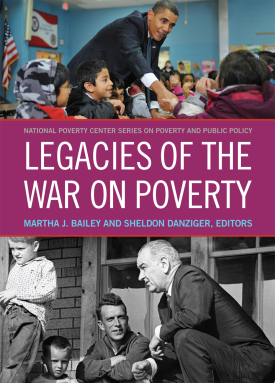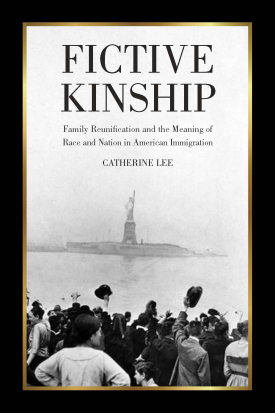Since 1966, the U.S. Equal Employment Opportunity Commission (EEOC) has been collecting data on private and state sector employment patterns. However, the EEOC has never used these data to evaluate the efficacy of their regulatory activity or to target particularly egregious employers for enforcement. Many federal regulatory agencies have access to administrative data but limited capacity to actually use the data in their enforcement activities. The EEOC is now in a planning process to more fully integrate available data into the enforcement process.
The sheer size of the immigrant population in America, as well as its diversity by national origin, education, and socioeconomic status, duration of residence in the United States, geographic location, and cultural attributes (including language), complicates and often confounds efforts to reach national consensus about the progress of immigrants in American society and their impact on American institutions. Popular attitudes towards immigrants among native-born Americans are conflicted.
The majority of recent social science research on labor market placement of disadvantaged groups in the population has focused on the demand side of the labor market, investigating the degree to which employer preferences shape the distribution of opportunities available to minority and female workers. Evidence from audit studies and other experiments, for example, suggests that racial discrimination continues to present a significant barrier to employment and a potentially important cause of persistent racial inequality in the labor market.

Legacies of the War on Poverty
About This Book
On the 50th anniversary of President Lyndon B. Johnson's declaration of "unconditional War on Poverty," January 8, 2014, the National Poverty Center at the University of Michigan's Gerald R. Ford School of Public Policy, the Russell Sage Foundation, and Spotlight on Poverty and Opportunity hosted a forum offering diverse perspectives on the effects of anti-poverty policies in the U.S. Click here to learn more about this special event.
Many believe that the War on Poverty, launched by President Johnson in 1964, ended in failure. In 2010, the official poverty rate was 15 percent, almost as high as when the War on Poverty was declared. Historical and contemporary accounts often portray the War on Poverty as a costly experiment that created doubts about the ability of public policies to address complex social problems. Legacies of the War on Poverty, drawing from fifty years of empirical evidence, documents that this popular view is too negative. The volume offers a balanced assessment of the War on Poverty that highlights some remarkable policy successes and promises to shift the national conversation on poverty in America.
Featuring contributions from leading poverty researchers, Legacies of the War on Poverty demonstrates that poverty and racial discrimination would likely have been much greater today if the War on Poverty had not been launched. Chloe Gibbs, Jens Ludwig, and Douglas Miller dispel the notion that the Head Start education program does not work. While its impact on children’s test scores fade, the program contributes to participants’ long-term educational achievement and, importantly, their earnings growth later in life. Elizabeth Cascio and Sarah Reber show that Title I legislation reduced the school funding gap between poorer and richer states and prompted Southern school districts to desegregate, increasing educational opportunity for African Americans.
The volume also examines the significant consequences of income support, housing, and health care programs. Jane Waldfogel shows that without the era’s expansion of food stamps and other nutrition programs, the child poverty rate in 2010 would have been three percentage points higher. Kathleen McGarry examines the policies that contributed to a great success of the War on Poverty: the rapid decline in elderly poverty, which fell from 35 percent in 1959 to below 10 percent in 2010. Barbara Wolfe concludes that Medicaid and Community Health Centers contributed to large reductions in infant mortality and increased life expectancy. Katherine Swartz finds that Medicare and Medicaid increased access to health care among the elderly and reduced the risk that they could not afford care or that obtaining it would bankrupt them and their families.
Legacies of the War on Poverty demonstrates that well-designed government programs can reduce poverty, racial discrimination, and material hardships. This insightful volume refutes pessimism about the effects of social policies and provides new lessons about what more can be done to improve the lives of the poor.
MARTHA J. BAILEY is associate professor in the Department of Economics at the University of Michigan and faculty research fellow at the National Bureau of Economic Research.
SHELDON DANZIGER is the President of the Russell Sage Foundation. He was formerly the Henry J. Meyer Distinguished University Professor of Public Policy and director of the National Poverty Center at the Gerald R. Ford School of Public Policy at University of Michigan.
CONTRIBUTORS: Elizabeth Cascio, Chloe Gibbs, Harry J. Holzer, Bridget Terry Long, Jens Ludwig, Kathleen McGarry, Douglas L. Miller, Edgar O. Olsen,Sarah Heber, Katherine Swartz, Jane Waldfogel, Barbara Wolfe.
A Volume in the National Poverty Center Series on Poverty and Public Policy
Download
RSF Journal
View Book Series
Sign Up For Our Mailing List
Apply For Funding

Fictive Kinship
About This Book
Today, roughly 70 percent of all visas for legal immigration are reserved for family members of permanent residents or American citizens. Family reunification—policies that seek to preserve family unity during or following migration—is a central pillar of current immigration law, but it has existed in some form in American statutes since at least the mid-nineteenth century. In Fictive Kinship, sociologist Catherine Lee delves into the fascinating history of family reunification to examine how and why our conceptions of family have shaped immigration, the meaning of race, and the way we see ourselves as a country.
Drawing from a rich set of archival sources, Fictive Kinship shows that even the most draconian anti-immigrant laws, such as the Chinese Exclusion Act of 1882, contained provisions for family unity, albeit for a limited class of immigrants. Arguments for uniting families separated by World War II and the Korean War also shaped immigration debates and the policies that led to the landmark 1965 Immigration Act. Lee argues that debating the contours of family offers a ready set of symbols and meanings to frame national identity and to define who counts as “one of us.” Talk about family, however, does not inevitably lead to more liberal immigration policies. Welfare reform in the 1990s, for example, placed limits on benefits for immigrant families, and recent debates over the children of undocumented immigrants fanned petitions to rescind birthright citizenship. Fictive Kinship shows that the centrality of family unity in the immigration discourse often limits the discussion about the goals, functions and roles of immigration and prevents a broader definition of American identity.
Too often, studies of immigration policy focus on individuals or particular ethnic or racial groups. With its original and wide-ranging inquiry, Fictive Kinship shifts the analysis in immigration studies toward the family, a largely unrecognized but critical component in the regulation of immigrants’ experience in America.
CATHERINE LEE is associate professor of sociology and faculty associate at the Institute for Health, Health Care Policy, and Aging Research at Rutgers University.
Download
RSF Journal
View Book Series
Sign Up For Our Mailing List
Apply For Funding
Determining the social consequences of rising economic inequality has turned out to be a daunting scientific task. There is abundant circumstantial evidence that rising economic inequality may do real social damage, both short and long term. But pinning down these effects is not easy. Cross-national comparisons show ample correlations between economic inequality and social ills like crime, poor health, low education, and sluggish mobility.
The United States is traditionally viewed as the epitome of market capitalism and a liberal welfare state with unregulated markets, low unionization, and high economic inequality. But the standing of market institutions has suffered in recent years, due in part to the financial crisis and rising inequality. Confidence in “major companies” and “banks and financial institutions” is at its lowest point in over thirty years.
The U.S. Department of Health and Human Services issued an advance notice of proposed rulemaking (ANPRM) on July 26, 2011 to solicit comments on how current regulations for protecting research participants under the federal government’s so-called Common Rule could be modernized and revised to be more effective.
Pagination
- Previous page
- Page 47
- Next page
